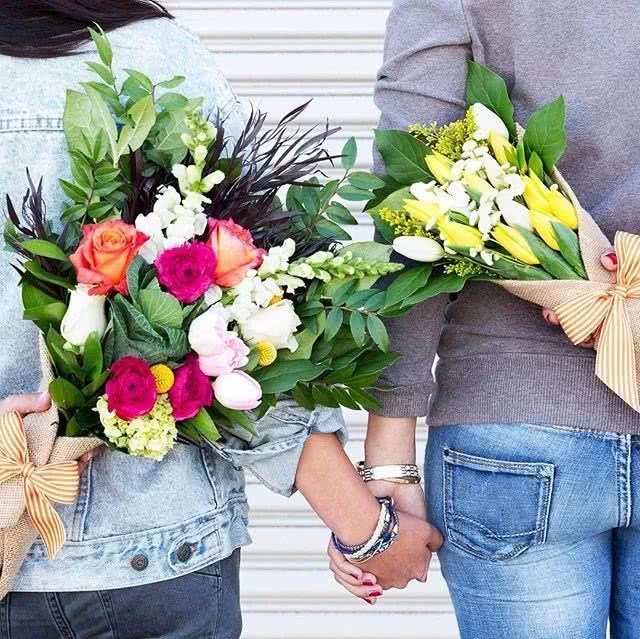Guidelines for the maintenance of Buddha's palm

Text
Picture and text: network
Buddha palm, alias glossy flower, precious green, is a perennial succulent plant. The stem is short or absent, the leaf is fleshy and ligulate, opposite 2-lobed, about 7CM, bright green, smooth and glossy, leaf tip slightly reversed outward.
The palm of the Buddha's hand opens in the sunny afternoon and closes at night, so that the day opens and the night closes for about 7 days. In case of rainy days or insufficient light in the cultivation place, it is difficult to open. It can be illuminated by artificial light and will open normally. Plants are cross-pollinated. It blossoms in autumn and winter, and the flowers are drawn from the leaves, with short pedicels and golden yellow.
Like warmth, drought tolerance, fear of high temperature, can not bear too much humidity. The growth temperature is 18-22 degrees, the growth is slow when it is more than 30 degrees, and it enters a semi-dormant state.
Four seasons maintenance
Change the basin every spring to remove the dry leaves. When the summer temperature exceeds 32 ℃, the plant will enter a semi-dormant state. at this time, the potted plant should be moved to a cool place, stop fertilizer and control water, keep the pot soil slightly dry, pay attention to environmental ventilation and return to normal water and fertilizer supply after autumn cooling. Autumn is the growing period, during which water and nutrients should be sufficient. Water the leaves as soon as they are found. In winter, the temperature of the greenhouse should be kept at no less than 10 ℃, the basin soil should be kept moist all the time, watering should be changed to spraying, and fertilization should be stopped to ensure that it can pass the winter safely.
Light: sufficient light is needed during the growing period, with high temperature and strong light in summer, and proper shading is needed.
Watering: ensure sufficient water during the growing period, the soil is moist, do not pour too much water, do not accumulate water in the basin, the soil can be slightly dry.
Soil: lax requirements on the soil, avoid consolidation and stagnant water, suitable for the growth of fertile, well-drained sandy loam soil.
Fertilization: rarefied organic liquid fertilizer is applied every 2-3 weeks during the growing period of Buddha palm. Bergamot grows vigorously in autumn, so nitrogen fertilizer should not be too much, otherwise it is easy to lead to plant overgrowth and rotten leaves, and the balanced supply of nitrogen, phosphorus and potassium should be emphasized. In addition, when pouring organic fertilizer, do not splash the fertilizer on the leaves, so as not to cause disease spots and rot.
Reproduction: division or sowing and reproduction. Ramet is generally carried out in combination with changing pots in spring, and the old plants are cut into several clumps and planted in a separate pot. Family propagation is usually carried out between September and October, and the cutting substrate can be cut with clean wet sand. After the cut is dried, it is inserted into the sand bed to keep the rooting temperature of about 20 ℃. After a month, it can take root, and when the new root grows to 2-3 cm long, it can be transplanted into the pot.
The article is organized by the succulent plant boutique, the copyright belongs to the original author, some articles can not find out the source, marked as the source network, if there is any infringement, please contact us immediately, we will deal with it in time.
- Prev

Life is beautiful with flowers and you.
-- the most readable Wechat Flower Friends in the field of THE END-- "Flower Wild Nature" Flower Art: zouzaidalulogo Design: zouzaidalu Flower Aesthetics | Plant Aesthetics | Life Aesthetics | Plant & Flower Exploration.
- Next

You should have a bottle of flowers on your desk.
THE END-- "Flower Wild Nature" Flower Communication: zouzaidalulogo Design: zouzaidalu Flower Aesthetics | Plant Aesthetics | Life Aesthetics | Plant & Flower.
Related
- Wuhan Hospital Iron Tree Blooming Result Was Instantly Frightened by the Gardener Master
- Which variety of camellia is the most fragrant and best? Which one do you like best?
- What is the small blue coat, the breeding methods and matters needing attention of the succulent plant
- Dormancy time and maintenance management of succulent plants during dormancy
- Minas succulent how to raise, Minas succulent plant pictures
- What are the varieties of winter succulent plants
- How to raise succulent plants in twelve rolls? let's take a look at some experience of breeding twelve rolls.
- Attention should be paid to water control for succulent plants during dormant period (winter and summer)
- Watering experience of twelve rolls of succulent plants
- Techniques for fertilizing succulent plants. An article will let you know how to fertilize succulent plants.

